Details of the "phyonthak threat". Republic of Korea naval forces set up maritime defense lines for the largest US military base in the APR
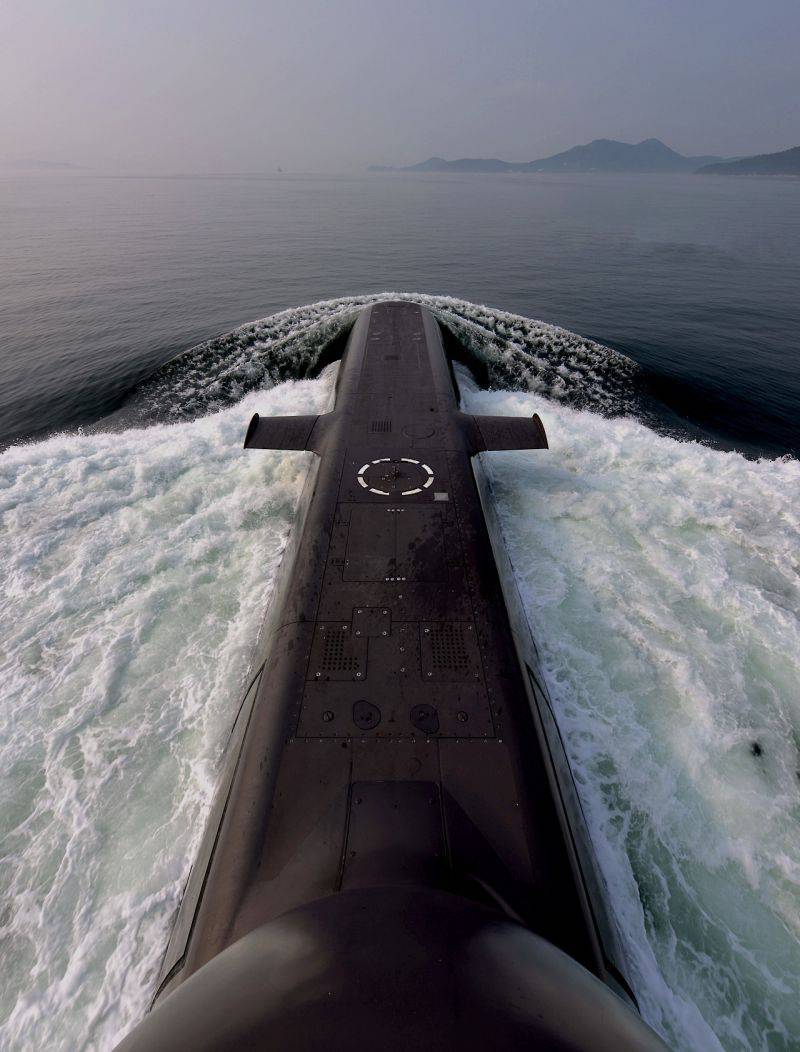
South Korean diesel-electric missile submarine with the Son Wonil non-volatile power plant (German Type 214, the export version does not provide for the demagnetization of the hull and components for hiding the enemy anti-submarine from magnetic anomaly sensors aviation) in surface mode
For more than a decade, the Asia-Pacific region has been in the geostrategic focus of the world's leading superpowers. And it is in this vast region that the most ambitious military-strategic plans of the United States and their allies are to be implemented to ensure complete domination over the armed forces of the PRC and Russia. The policy of the United States and the major Western European states quickly lost a significant portion of the specific weight immediately after the start of the large-scale air attack operations against the ISIS militants by the Russian airborne forces.
LIKE THE WEST "SYRIAN LEVERS" LOST
In the course of the operation, dozens of facts came to light, testifying far not in favor of the West: Russian military aircraft showed with their powerful precision strikes that the powerful and modern US Air Force did not at all seek to destroy the IG infrastructure. And the United States itself, with its main allies in the Mediterranean and Front Asia (Turkey, Saudi Arabia and Qatar), generally “lost” the face of the world community due to the direct material and technical support of terrorism in the region for its own economic and geopolitical benefits. The facts of this were perfectly reflected in the photographs and video footage made by the optical-electronic complexes of the Russian tactical aviation and the UAV, which captured thousands of DAISH trucks with full tanks of Iraqi and Syrian oil, heading straight to the Turkish border.
The success of the Russian strategy in the Middle East was achieved not only due to the excellent execution of the military operation of the Aerospace Forces in conjunction with the Ground Forces SAR forces against the Fortified Areas of Daisy and exposing the quite understandable tolerance and loyalty of the US Air Force to militant activities, but also due to the rapid deployment of unprecedented air defense on the ground ZRK C-400 "Triumph" and ship C-300F "Fort", which will now provide reliable protection of both the Russian Hmeimim airbase and the SAR government forces from any threat from s West or Turkey. On absolutely legal grounds, Russia has established an adequate balance of forces in the skies over Syria, and can dictate its conditions without the risk of losing our military infrastructure as a result of a change of power in Syria or military aggression by the US allies.
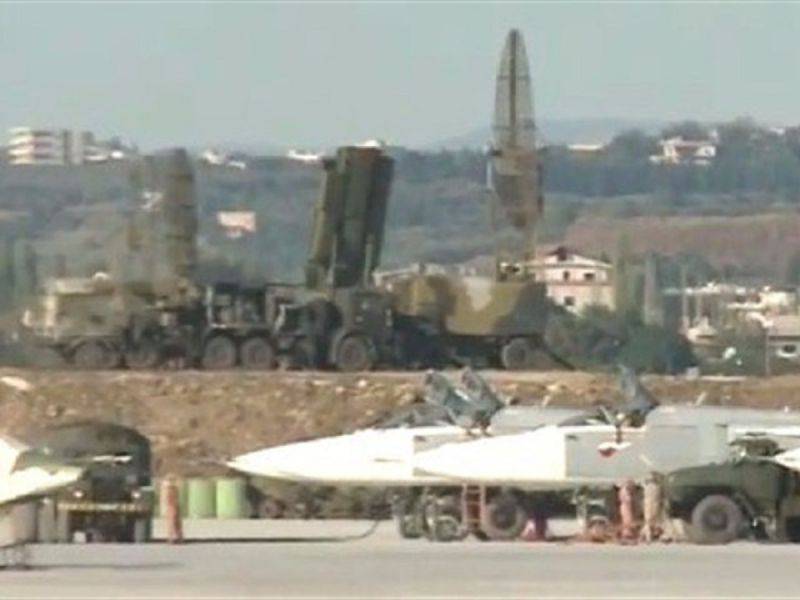
For reliable air defense of Hmeimim airbase airspace with the entire airspace of the western part of Syria, as well as overlapping the approaches of the rocket-hazardous air direction of the Turkish airbase Injirlik, the Russian Aerospace Force sent the Triumph C-400 “full set” to Latakia. This photograph captures the process of servicing and refueling Su-24M tactical bomber on Avb Hmeymim. In the background is clearly visible all-altitude detector (BBO) 96Л6Е - one of the most important auxiliary radar systems C-400. Together with the 91H6E radar detector (RLO), the 2 all-altitude detector increases the divisional viewing qualities by a factor of 96. The 6Л100Е radar operates in the C-band UHF range and is capable of tracking air targets at 10000 aisle at speeds up to 10 km / h and altitudes from 30000 to 55 meters. Information about the air situation is transmitted directly to the 6K92E PBU and is used to target the radar to the illumination and guidance (MRLS) of the 6Н400Е. After the appearance of C-XNUMX in Latakia, the US Air Force was forced to completely change the tactics of using its aircraft over the SAR (the standard points of the path were set around the range of the Triumph, and the airplanes fly less frequently and follow the terrain) ceased to operate on the SAR
LOSTING IN THE NEAR EAST, THE USA OPENS THE SECOND FRONT IN THE APR
In such difficult conditions, the only loophole for the Americans remains control over the Asia-Pacific region, in which surface and underwater components of the Russian Navy and the Chinese Navy continue to be inferior to the numerous American Navy with dozens of Aegis destroyers and URO cruisers, and well-developed infrastructure fleet and the Air Force in the form of bases on Okinawa and Misawa (Japan).
Analyzing the scale of American control in the region, it is worth remembering about the agreement between the United States and the Philippines, which recently will again allow Americans to use the infrastructure of temporarily closed large military facilities created in the 20th century - the Clark airbase and the huge Subic Bay naval base, adapted to the mooring of aircraft carriers, cruisers and destroyers. The water area of the base is approximately 100 km2, and the 30-meter depth of anchorages makes it possible to receive absolutely any existing and not yet developed naval military "transports", floating multipurpose radars, etc. Also in the Philippines (near Clark Air Base), a complex of tropospheric military communications has been deployed, linking Clark and Subic Bay bases with military facilities on Fr. Guam (Avb Andersen and the eponymous naval base of Guam), in Japan, the Republic of Korea, as well as the command of the US Air Force in the Pacific Ocean and the headquarters of the Pacific Fleet, located in Hawaii.
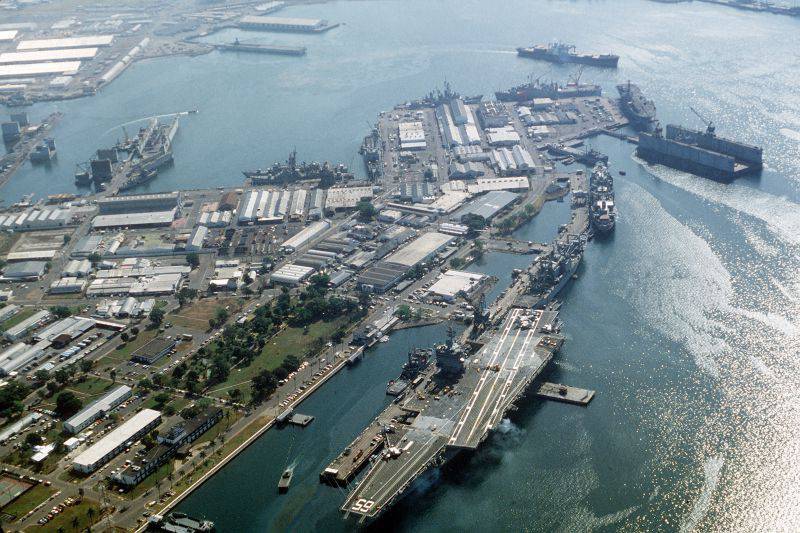
In two photographs taken by the US Navy, you can trace the entire chronology of the use of the Philippine US naval base "Subic Bay". At the top of the quay wall is the first largest nuclear aircraft carrier of the US Navy CVN-65 USS Enterprise, which served in the US Navy 52 of the year. The bottom photo captures the latest US EM URO DDG-106 USS Stockdale (Flight IIA version), which was launched in the 2008 year. In the upper photo you can also see the basis of the foundations of the Subic Bay repair and technical base - one of the five floating docks, the total area of which is 0,2 million m 2. Subic Bay's BMB operated in the Philippines 94 of the year (1898-th to 1992 year), then was closed for 12 years. And in 2014, the year was reopened at the request of the US leadership, which declared the South China Sea a region of its geostrategic interests. The Americans did not need a long wait for the consent of the Philippines, since Manila has a personal territorial dispute with China about the ownership of the Xisha and Nansha islands in the Spratly archipelago, and American support and presence have only become to their advantage
The main value of Avb Clark in the Philippines is the possibility of using US air force tactical aviation (F-15E, F-22A, F-35A) in the immediate vicinity of the PRC airspace without the need to attract KC-135 and KC-10A refueling aircraft. As is known, the process of refueling combat aircraft in the theater of operations creates enormous dangers for the crew of an air tanker and for fighter pilots. From Clark Air Base to the air borders of the PRC, a little more than 1000 km. In addition, the entire southern part of the Celestial Empire is being monitored: not a single state of Southeast Asia, except the Philippines, can provide such broad operational capabilities.
THREAT FROM PHYENTECH IN OUR BORDERS
But the Americans decided to go even further. Washington claims all the time that the main strategy of the United States and allies in Southeast Asia and the Korean Peninsula is to preserve “peace and stability”, and it is for this purpose that more than 60% of the US Navy’s naval personnel will be included in the structure of the US Navy Pacific Fleet (3 th and 7 th operational fleets in charge of ATP). But recently it became known that the US Armed Forces are not going to be limited to the Philippines, Japan, Guam, as well as the modernization of the Taiwan Air Force. In the coming years, the Republic of Korea will become the main outpost of the American army in which the large Osan and Gyongsan airbases, as well as the military garrison Camp Humphreys, are already located on 2. As part of the two Avb is the 51-e aviation wing of interceptor fighters (F-16C and assault unit A-10A), as well as the 8-th aviation wing (F-16C / D, equipped with the most advanced missile weapons and TV / IR sighting and navigation complex LANTIRN); F-16C / D as part of 40 machines, and A-10A - 24 machines. The military contingent of 2's Avb and the garrison Camp Humphreys is already approaching 29000 people. personnel, and will be increased in 1,5 times (to 42000 people), together with the number of military equipment. The expansion of Camp Humphreys, which turns into a small town, takes place near the South Korean city of Pyongtaek, which is only 675 km from the Russian border.
The number of US military personnel in South Korea will exceed that of the Finnish Armed Forces, and at the Camp Humphreys garrison, the 2 Infantry Division, which already has AH-64D “Longbow” attack helicopters, will be complemented.
Considering the minimal remoteness of Pyongtak from the Russian border, the “pumping” of these military facilities with new equipment and drugs shows the long-term US plans for the strategic environment of the Russian Federation in the Far East. A similar "yellow" level of threat from these US military bases will be well felt by the PLA. It’s just 400 km to the coast of China from the South Korean Pyeongtaek, and 570 km from the Gyongsan airbase. What does this mean?
US Air Force tactical fighters will be able to use large AGM-158A / B cruise missiles (JASSM / JASSM-ER) directly from the airspace of the Republic of Korea, i.e. under the most powerful cover of the ground-based Patriot PAC-2 / 3 air defense missile systems and other air defense / missile defense systems capable of ensuring the complete safety of carrying out shock operations “sideways” with opponents (China and Russia). After Camp Humphreys was strengthened, South Korea would legitimately be included in the list of the most strategically important targets for tactical and strategic aviation of the Russian Air Force deployed at the numerous air bases of the Eastern Military District. Phyontak will become the most dangerous and close US military facility for the Russian Federation and the People's Republic of China in the Far East theater.
They are being prepared for the reception of a reinforced American military outpost on its territory and the Armed Forces of the Republic of Korea. Modernization work of the South Korean army, naturally, is carried out under the pretext of increasing defense capability against the threat of the KPA (armed forces of the Democratic People’s Republic of Korea).
Pyongyang, which is far away from the tricky geopolitical turmoil in which the main “players” are involved, managed to abstract well and formed its own military concept in the Far East, in which the USA and all their “henchmen”, regardless of economic advantage and temporary "warming" in the relationship, act as the main aggressors. The military policy of the DPRK leadership practically does not depend on geopolitical "transformations", and therefore North Korea is "bone in the throat" facing American plans in the Far East. All of a sudden, the KPA missile units can inflict a massive missile strike with hundreds of Hwaseong-6 and Musudan medium-range air defense missiles capable of reaching the main American bases in the Philippines, Guam and Okinawa. It will not be possible to intercept dozens of missiles even by the forces of the US Pacific Fleet and the Japanese Self-Defense Forces, the losses are enormous, so most of the pro-Western APR participants fear this country.
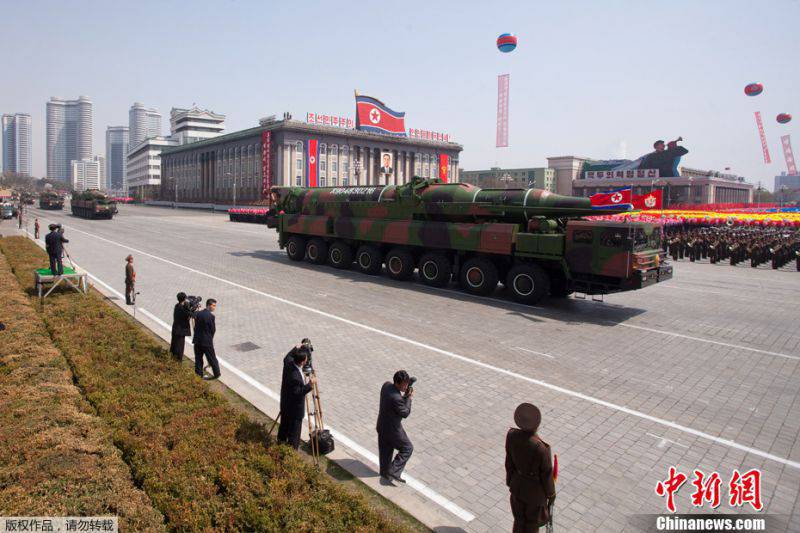
Rocket weapon KPA includes more than 200 mobile ground-based missile systems with MRJM25 "Musudan" (in the photo). The MRSD range is 3500-4000 km, and the mobile platform allows you to simultaneously launch almost the entire arsenal of these missiles, which will not be destroyed in the required amount by the forces of “Aegis”, “THAAD” and “Patriot”. Even 20 — 30 broken through. BM25 is enough to destroy several large American naval bases within the APR. The US Air Force and the US Navy so far cannot oppose this weapon to the KPA, so it will be used much earlier than the installations are destroyed by the TCR "Tomahawk" or "JASSM-ER"
At the end of November, information was confirmed that the South Korean Navy and the US government had an agreement to regularly purchase the first shipments of UGM-84L “Harpoon” Block II anti-ship missiles under a contract approved by the US Department of State. The UGM-84L “Harpoon” Block II (“Sub Harpoon”) ASM is an underwater launch missile, it is launched from standard 533-mm TA (torpedo tubes) from a submerged position, the missile's range is 130 km. In 2015, the Republic of Korea Navy ordered 19 “Sub Harpoon”, 2012 ordered and received 18 of such missiles. Why is this modification of "Harpoons" focused on the Armed Forces of the Republic of Korea? After all, a tactical fighter aircraft fleet is represented by 160 multipurpose F-16C / D and F-15K tactics capable of carrying hundreds of more long-range versions of the Harpoon - AGM-84D2 airborne (their range reaches 280 km) on suspensions. The trick here is very tricky and subtle.
For the defense of their naval strike group, the command of the South Korean Navy provided for all the strengths and weaknesses of the North Korean Navy. With one hundred percent probability, we can assume that the Armed Forces of the Republic of Korea and the command of the American garrison Camp Humphreys are considering the possibility of conducting a joint land operation in the DPRK in the event of an escalation of the conflict, including the landing of the landing force by the American landing ships docks. For the successful conduct of such an operation, a sudden and rapid destruction of a large number of North Korean surface ships and boats operating in the near-sea zone of the DPRK will be required. It will not be so easy to do this, because the North Korean fleet is armed with 1000, although outdated, but very “agile” small missile and patrol boats, landing craft and small submarines capable of causing significant damage to several dozen ultra-modern South Korean and American Aegis ships. Moreover, the latter will not be able to get close to the shores of the DPRK close enough to open a covering artillery fire on the coastal objects for the possibility of landing troops.
It is known that fully modern anti-ship missiles, the appearance and expected characteristics of which are quite comparable with the Russian X-35 "Uran", began to come into service with the patrol ships of the North Korean Navy and coastal missile units. In serial production, the expense of these products can easily go to hundreds / thousands, which will not allow neither the Americans nor the South Korean neighbors to safely own the territorial waters of North Korea.
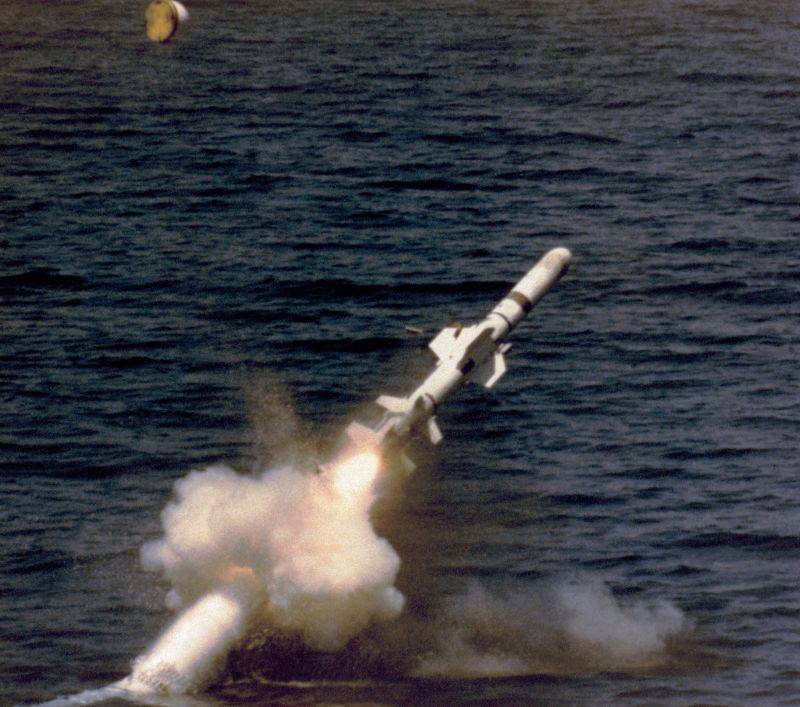
The indisputable advantage of the UGM-84L Harpoon submarine launch is the surprise effect of the RCC approach. When launching a rocket from a surface ship or a tactical fighter, even the simplest ground and air RTR and DER devices (both passive and active) detect the vehicle for 300 - 500 km, which gives the ground defense time to prepare for repelling the attack from a known direction to detect however, the CRP with the EPR 0,1 m2 at an altitude of 12 — 20 m suddenly out of the water is almost impossible, especially with the DPRK DRLO, it will be detected only a few kilometers from the target, after the release of radio horizon
For this reason, the only viable solution may be the SCRC “Sub Harpoon” with the UGM-84L Block II rocket. Missile carriers can be 9 209 low-noise diesel-electric submarines of national construction and 9 purchased from German Howaldtswerke-Deutsche Werft anaerobic (air-independent) diesel-electric submarines of 214 type; the latter are distinguished by ultra-low hydroacoustic visibility.
It is here that the entire vulnerability of the North Korean fleet will manifest itself. The lack of high-performance processors, highly sensitive electronics with the ability to select complex underwater noise and other “gadgets” for modern GAK, due to the isolation of the DPRK, will play into the hands of the submarines of the Republic of Korea, the USA and Japan, who can enter the territorial waters of the DPRK and open a “free” hunt to North Korean warships equipped with primitive hydroacoustic stations.
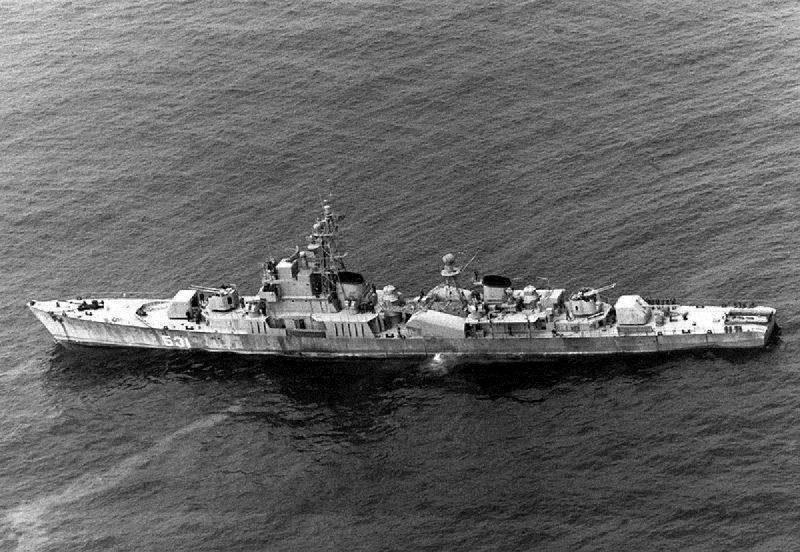
The armament of the North Korean Navy has a huge number of torpedo, patrol and patrol boats; There are also missile boats of 205 Pr. Osa, Sochju class and Huanfen in the number of 35 — 40 units, at least 15 MPK and over 45 multipurpose submarines, half of which are diesel submarines Pr. 613 and 633, the rest are ultra-small submarines for special operations. Of the large patrol ships, the 2 frigate of the Nadzhin class can be noted (photo). The radar image of the ships leaves much to be desired: various communication antennas and, probably, navigation radars can be seen on the main superstructure mast; on the second mast there is a small radar sight for controlling combat modules with X-NUMX-mm AK-30 cannons, located between the R-CXP-230 launcher and in the superstructure in front of the rear artillery units. It is also known about the appearance of the upgraded ship class "Nadzhin", called "Nampho". The new frigate dismantled the twin 15-mm AU, 57 oblique PUs of the outdated Termit PKRK, and instead of the twin AK-2, the most advanced analogs of the Soviet / Russian ZAK AK-15 modules were installed. Instead of “Termite”, 230 quadruple launchers were installed for analogs of the UR X-630 RCC, which were tested at the beginning of 2 (photo below). Ships are practically unable to repel the blow of modern anti-ship missiles due to the absence of even simple defensive short-range air defense systems of the type “Osa-MA
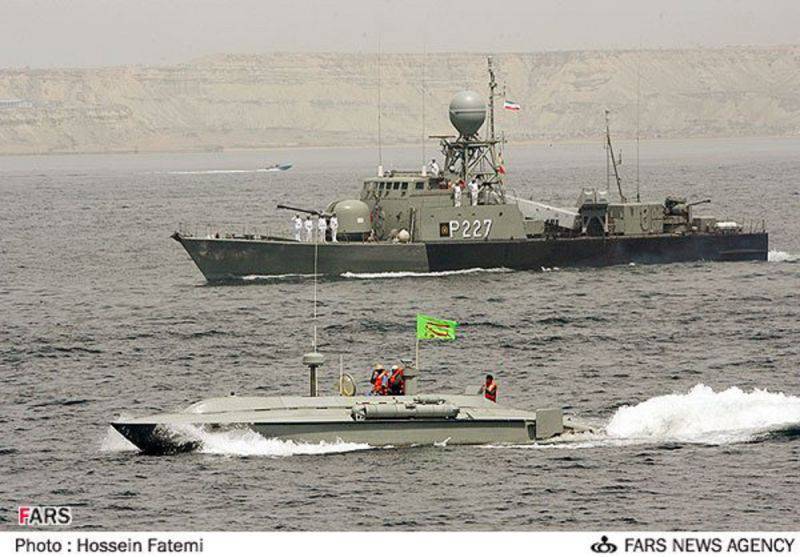
In this photo, taken by the Iranian fleet, the most dangerous specimen of North Korean small hybrid amphibious boats that can damage some modern naval ships of the United States and the Republic of Korea. This submarine cutter is a high-speed glider submarine. Its speed in submerged position to 15 km / h (on an electric motor), in the surface position - to 90 km / h. An important feature of the machine is a small reflective surface, which becomes even smaller during a semi-submerged travel mode. The EPR of the boat does not exceed the indicators of a simple metal buoy, and when covered with a radio absorbing material, even less. The submarine was purchased by the Iranian Navy
The only panacea for the low stability of the Korean People’s Army can only be solid military-technical support from Russia and the PRC: the transfer of more or less modern air defense and missile defense systems, modern combat aviation models, training of the air crew of the DPRK air force to information the provision of airborne early warning aircraft and advanced ground-based facilities RTR.
This is included in both our and Chinese interests, because North Korea is indirectly the last defensive line of deterring the “American military machine” in the APR just a few hundred kilometers from its home borders, and this milestone, despite its excellent impact potential, has completely outdated air defense, which will not reflect even a single MRAU.
The cheeky behavior of South Korean sailors in the Yellow Sea also testifies to the strengthening of the American military contingent and equipment in Pyeongthek. In early December, in the area of the famous 38-th parallel, the South Korean SC opened warning fire on a Chinese patrol boat, catching up with Chinese poachers. The crew of the Navy sentryman of the Korean Republic explained such actions by confusing the patrol vessel of the PRC with a North Korean warship entering the controversial section of the Yellow Sea. Similar situations with the PRC arose in South Korea before. For example, in 2011, when two South Korean military fired at the Chinese passenger airliner Asiana Airlines. Apparently, the South Korean leadership, feeling a powerful American patronage, absolutely does not attach importance to military-political stability with the PRC. And every year there will be more such shtrishkovs, commensurate with the militarization of the region from the American side.
US military facilities near Pyeongtaek, as well as Osan and Gyongsan airbases, will achieve maximum operational readiness earlier than 2020, and therefore the expansion and modernization of the VKS aircraft fleet in the Eastern Military District and joint Russian-Chinese naval exercises like “Sea Interaction-2015” should be conducted with participation of more modern shipboard equipment, most of which should be regularly armed with the Pacific Fleet. From 2017-2018 Tactical Japanese fighter 5-generation ATD-X “Shinshin” will begin to make its tactical adjustments in the alignment of forces in the Asia-Pacific region, the mass production of which will inevitably push forward the deployment of T-50 PAK FA fighters to Avb.
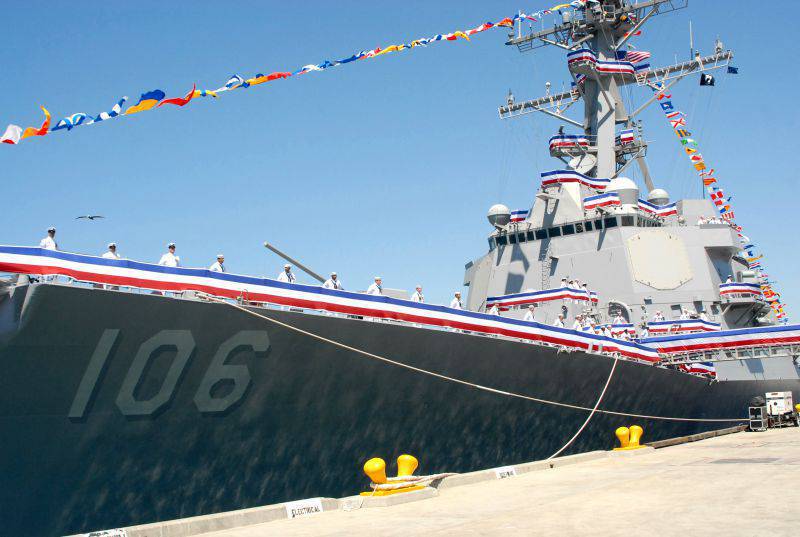
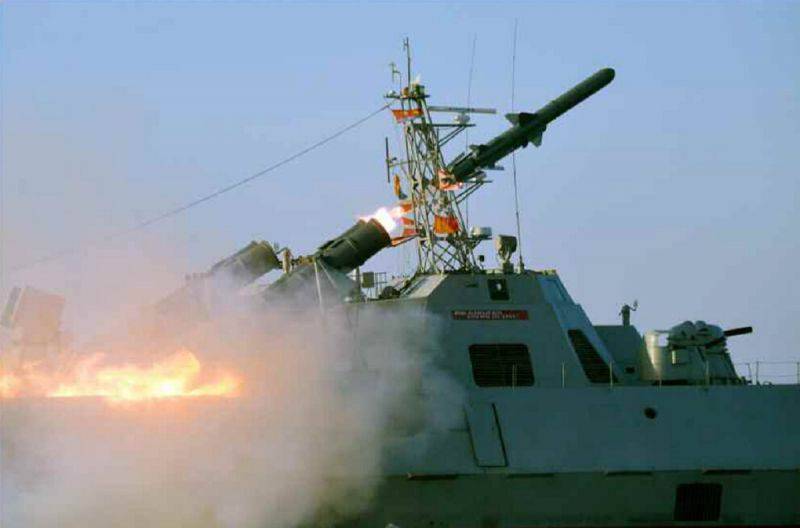
Information